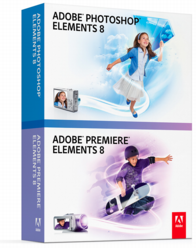 |
| About Alan |
| Tutorials |
| Free files |
| Win9x FAQs |
| E-mail Alan |
| |
| Articles |
| BIV articles |
| Archive |
| Other articles |
| Archive |
| |
 |
|
|
||
|
From
pocket-sized chargers to magic mice: your 2009 techno-gift guide
by Alan Zisman (c) 2009 First published in Business in Vancouver December 8-14, 2009 issue #1050 High Tech Office column 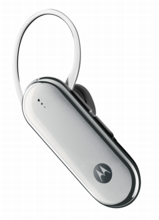 It’s the time of year for techno-Santa to dig deep into his
high-tech gift bag. Here are some of the things he’s recommending for
this season’s gift giving. It’s the time of year for techno-Santa to dig deep into his
high-tech gift bag. Here are some of the things he’s recommending for
this season’s gift giving.Keep your hands on the wheel In-car mobile-phone use is a no-no, unless you can keep both hands on the wheel and your eyes on the road. To help, Motorola offers a range of devices using Bluetooth wireless connections to pair a headset to your phone. For instance, the $90 Motorola H790 is a lightweight device looking a little bit like a USB memory key on an ear loop. It includes various-sized earbuds to ensure a comfortable fit. Motorola’s CrystalTalk noise-cancelling technology ensures clear call quality. Nice touch: when turned on, the headset tells you its battery status; it’s good for about five hours of talk time and 168 hours of standby. 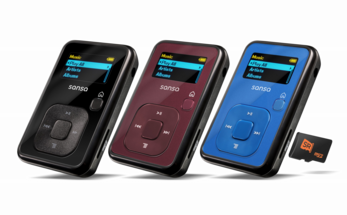 It’s not an iPod It’s not an iPodIt’s tiny, inexpensive and plays music. And it’s more affordable and more fully featured than its better-known competitor from the fruit-flavoured company. San Disk’s matchbox-sized Sansa Clip+ comes in several colours with storage capacities from two to eight gigabytes, includes a built-in FM radio and voice recording and is Windows and Mac compatible. For additional storage, you can plug in a microSD memory card. Unlike Apple’s low-end iPod Shuffle, there’s a little screen and controls so music-play isn’t random ($50 to $80). To fill the Clip+ with the gift of music, San Disk offers $44 SlotRadio cards, each of which hold 1,000 or so genre-specific tunes pre-loaded: rock, country, oldies, hip hop, ’80s and ’90s. ($40.) 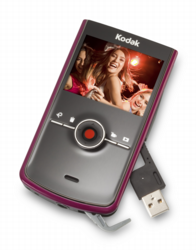 True HD
recording in your pocket True HD
recording in your pocketPocket-sized video recorders are getting better and better. Last year, a variety of models offered SD (old-style standard definition) recording. Earlier in 2009, the new wave of models delivered 720p high-definition video. Kodak’s new $200 Zi8 model ups the ante with 1080p. It’s thinner than the last-generation 720p Zi6 model (still available), exchanging the earlier model’s AA batteries for a space-saving rechargeable (and replaceable) lithium-ion battery. Also new: image stabilization and face tracking for clearer videos and a handy audio input. Like the Zi6 (and unlike pocket cameras from Flip and Creative), you can take still pictures. And unlike most of the competition, both Kodak’s new and old models use removable storage – widely available SD memory cards, so you never need to run out of space. Just remember to buy a card or two along with the Zi8! Magic for Mac users 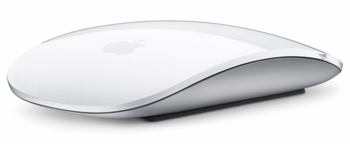 The
wheel on your mouse goes round and round. But not on Apple’s new Magic
Mouse. The
wheel on your mouse goes round and round. But not on Apple’s new Magic
Mouse.Nearly flat and with no visible buttons, it also has no wheel. Instead, the Magic Mouse uses multi-touch gestures like an iPhone. Rather than spinning a wheel to scroll up or down, you just move your finger along the mouse surface to scroll up, down, left or right. Despite the apparent lack of buttons, clicking on the left or on the right of the mouse does what you would hope. (Yes, the Mac supports right-clicking.) The Magic Mouse is wireless. It uses the Bluetooth connection built into all of Apple’s Mac models. Power management saves on battery power, but is smart enough to quickly wake the mouse up as needed. The Magic Mouse is bundled with Apple’s new iMac and Mac Pro desktop models and available on its own ($70) to give to Mac users. Windows users could use it as a standard wireless two-button mouse but will miss the magic multi-touch support. Holiday season is a big time for family photo-taking. If you can’t wait to get your hands on glossy snapshots, HP suggests you include a Photosmart A646 photo printer ($180) under the tree and promises you printouts in as little as 28 seconds. Lunchbox-sized, complete with handle, it has some nice touches: touch-screen controls on a large LCD panel along with the ability to get photos over Bluetooth from compatible mobile phones or cameras. A carrying bag made of recycled plastics is included, and HP notes that the printer is made from 32% recycled materials. Picture quality is bright and sharp, and the printer is easy to set up and use with Windows and Mac systems.
Easy backup anywhere, anytime 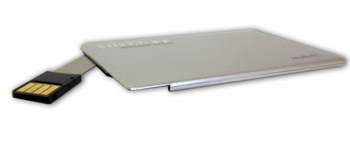 For most people backup is a chore that while
admittedly important, is most often avoided. Canadian company Clickfree
has done a good job of making it relatively painless with a range of
products that activate easy-to-use backup software – no installation
needed – as soon as they’re plugged in. Starting with portable external
hard drives, the product line has grown this year, adding support for
Macs to its initial Windows software. Among my favourites: the $60
Clickfree Transformer for iPod is a simple adaptor that lets you use
Clickfree’s automatic software to store your backups onto free space on
an iPod or iPhone without overwriting the music or other data stored
there. For most people backup is a chore that while
admittedly important, is most often avoided. Canadian company Clickfree
has done a good job of making it relatively painless with a range of
products that activate easy-to-use backup software – no installation
needed – as soon as they’re plugged in. Starting with portable external
hard drives, the product line has grown this year, adding support for
Macs to its initial Windows software. Among my favourites: the $60
Clickfree Transformer for iPod is a simple adaptor that lets you use
Clickfree’s automatic software to store your backups onto free space on
an iPod or iPhone without overwriting the music or other data stored
there. A bonus: it can also be used to transfer music from your iPod or iPhone back onto your computer. A similar $90 Transformer SE can be used with USB hard drive as well as iPod/iPhone models for Clickfree backup storage. The Clickfree Traveller models look like metal-encased credit cards, but they’re USB backup storage devices with 16-, 32- or 64-gigabyte capacities ($80-$270). A clever, flexible USB connector is built in, ready to connect. Like the other Clickfree devices, as soon as it’s plugged in, the company’s clever backup software pops up. 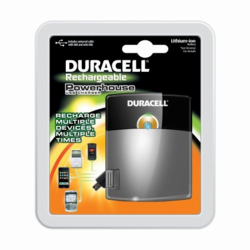 Is
that a charger in your pocket? Is
that a charger in your pocket?Batteries seem to die when you need them most. With more devices you either need to tote around more dedicated chargers or, perhaps, keep a laptop on hand because, increasingly, devices can be charged via a USB connection. Duracell’s $50 Powerhouse USB Charger is a pocket-sized device that can be used to charge a wide range of gear, including iPods, iPhones, BlackBerrys, many other mobile-phone models and many digital cameras. Storing enough power to charge an iPhone or BlackBerry four times, it can be used to charge two items at once and includes a swing-out mini-USB arm and a standard-sized USB port. (Duracell also offers a smaller, less-powerful $30 Instant USB Charger.) • |
||
|
Alan
Zisman is a Vancouver educator,
writer, and computer specialist. He
can be reached at E-mail
Alan
|
||
|
|
||
| |

